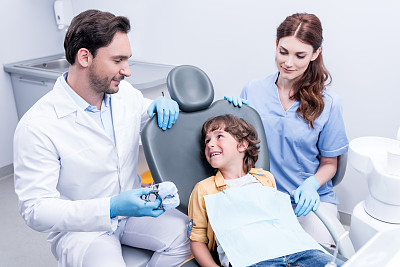The Steps and Considerations Involved in Extracting a Tooth for Optimal Dental Health
Summary: Extracting a tooth is a significant dental procedure that requires careful consideration to ensure optimal dental health. This article outlines the key steps and considerations involved in tooth extraction, beginning with the assessment of the need for extraction, followed by the preparation for the procedure, executing the extraction safely, and finally, the post-extraction care crucial for recovery. Each stage emphasizes the importance of professional guidance, patient comfort, and maintaining long-term dental health. Understanding these aspects will empower patients to make informed decisions about their dental care.
1. Assessing the Need for Tooth Extraction

Before proceeding with a tooth extraction, a thorough assessment is essential. Dentists typically perform a comprehensive examination to evaluate the condition of the tooth and surrounding structures. This evaluation often includes dental X-rays to visualize the tooths position, root length, and proximity to nearby teeth.
In many cases, a tooth extraction is considered when the tooth is severely decayed, infected, or damaged beyond repair. Additionally, wisdom teeth, which can cause overcrowding or alignment issues, often necessitate removal. Understanding the underlying reason for extraction is vital in deciding the best course of action.
Patients should have an open discussion with their dentist regarding their symptoms and previous dental history. This communication helps the dentist provide a tailored recommendation for the extraction and addresses any concerns regarding pain, complications, or alternative treatments.
2. Preparing for the Extraction Procedure
Preparation plays a critical role in ensuring a smooth tooth extraction process. Upon determining that extraction is necessary, the dentist will explain the procedure and what to expect. This discussion includes potential discomfort, the use of anesthesia, and post-extraction care.
Patients are often advised to outline their medical history, including current medications and any allergies. This information enables the dentist to assess any risks associated with using local anesthetics or sedatives during the procedure. Patients may be instructed to avoid certain medications leading up to the extraction to minimize bleeding or complications.
Practical preparations should also be considered. Patients should arrange for someone to accompany them, especially if sedatives are used. Having a written plan for aftercare helps ensure a smooth recovery at home, as the effects of anesthesia may impair one’s ability to drive or operate machinery safely.
3. Executing the Tooth Extraction Safely
On the day of the extraction, the dentist will administer appropriate anesthesia to minimize discomfort. Local anesthesia is commonly used, numbing the area around the tooth, while sedation may be employed for more complex procedures or anxious patients. Ensuring patient comfort is a priority throughout the extraction.
The actual extraction procedure typically involves loosening the tooth using specialized instruments and gently removing it from its socket. In some cases, the dentist may need to incise the gum tissue or remove bone to facilitate extraction. It is crucial for the dentist to take great care to preserve surrounding tissues during this process to minimize healing time.
Once the tooth is extracted, the dentist will provide proper instructions for managing any bleeding and ensuring that the extraction site is clean. They may place gauze over the extraction area to aid in clot formation and reduce bleeding. Ensuring a sterile environment and following post-operative guidelines is key to preventing infection.
4. Post-Extraction Care for Optimal Recovery
Post-extraction care is essential for effective recovery and ensuring optimal dental health. Following the dentists instructions, patients should rest for the remainder of the day and keep physical activity to a minimum. Ice packs can be applied to the outside of the cheek to reduce swelling and discomfort.
Dietary considerations play a significant role in recovery. Patients are often advised to stick to soft foods and avoid hot liquids for the first 24 hours. Maintaining hydration is crucial, but using a straw should be avoided as it can dislodge the blood clot and lead to complications such as dry socket.
Monitoring the extraction site for any signs of infection, excessive swelling, or prolonged bleeding is necessary. Attending follow-up appointments with the dentist helps ensure proper healing, and patients should not hesitate to reach out if they experience unusual pain or symptoms during recovery.
Summary:
In conclusion, extracting a tooth involves several critical steps and thoughtful considerations to ensure optimal dental health. From assessing the need for extraction to preparing for the procedure and managing post-extraction care, each phase is vital. Patients equipped with knowledge and guidance can navigate this process confidently, prioritizing their comfort and health.
This article is compiled by Vickong Dental and the content is for reference only.


